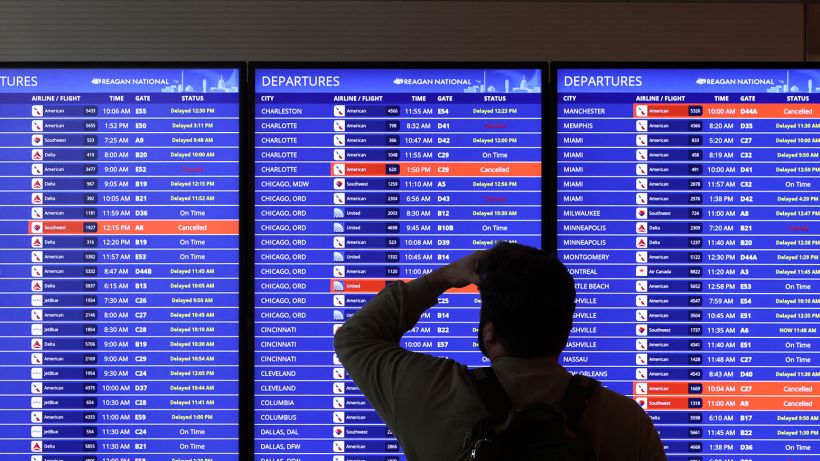Editor’s Note: Dana Peterson is an executive vice president and chief economist at The Conference Board. The opinions expressed in this commentary are her own.

With the federal government spending trillions to blunt the pandemic’s economic damage, and the national debt mounting as a result, Wall Street and Washington are concerned about a 1970s-style surge of unrestrained inflation. What’s more, rising gasoline costs, semiconductor chip shortages and the Suez Canal tanker incident have caused both businesses and consumers to worry about rising prices. But is this anxiety justified? Should Americans brace for a 1970s redux?
Based on the current factors at play, fears of dire, long-lasting inflation are likely overblown. Here are five reasons why:
Prices are rising in areas that are pandemic-specific and will likely be transitory
Backlogs for popular pandemic-era goods — like lawn care tools, furniture, fitness equipment and laptops — are putting upward pressure on producer prices. And a pre-pandemic shortage of shipping containers, which hold clothes and machinery, among other goods, is only adding fuel to the fire. While many businesses are trying to absorb mounting costs, at some point they reach thresholds where they must pass those costs onto consumers.
Nonetheless, a hair salon or movie theater does not necessarily need a global supply chain to operate. So, as households shift spending away from goods and back to in-person services when the pandemic subsides later this year, these supply chain woes — and the high costs associated with them — should fade.
Sticker shock for services as things get back to normal is likely — but that too shall pass
As state and local governments continue reopening economies and vaccines are broadly distributed, consumers will naturally gravitate toward services that they can enjoy outside of the home. Strong demand for travel-related services, including hotels and flights, entertainment, such as sporting events and concerts, and even personal care, like pedicures, might push consumer prices upward.
However, hot-commodity goods during the pandemic — for example, video game systems, meat and outdoor furniture — will likely see their prices weaken. That would help offset rising services prices. And once consumers get their fill of in-person services — one can only go to an amusement park so many times — those prices should also retreat as demand subsides.
Savings from remote work might counter the inflationary effects of rising minimum wages
Several state governments are raising minimum wages for the lowest-paid workers. Additionally, some policymakers are pursuing a hike in the federal minimum wage rate. Higher wages typically lead to higher consumer prices as better-paid workers demand more goods and services. Meanwhile, industries employing many low-wage workers, including hotels, restaurants and tourism, as well as companies in states with many minimum-wage workers, will likely pass higher costs onto customers.
However, the advent of remote work as a viable option for businesses and workers should help offset some of the minimum wage hike effects at a macro level. Employees can save on commuting costs and potentially move to cheaper locales. Meanwhile, businesses can save money on office space and hire workers from lower-cost jurisdictions — expenses that are typically passed onto consumers.
Factors that have kept inflation at bay over the last 20 years remain alive and well
Inflation in the United States has largely not been a problem in recent decades for many reasons that still hold: Automation lowers the cost of labor; higher depreciation as technology becomes obsolete more quickly has led to more business investments in R&D, software and patents, which may cost less than investments in buildings and equipment; the rise of e-commerce platforms has generated more competition for a broader set of goods that keeps prices low; and firms relying increasingly on contract employees have dampened wages. Consumers’ desire for value from big box stores, discount retailers and outlets, along with streaming content, have also helped to keep inflation at bay.
The factors are not only domestic. Globalization (e.g., international supply chains, outsourcing) and the likely continued relative strength of the US dollar will work to keep prices down. Indeed, Americans benefit from the low cost of goods sourced from abroad. For example, a US company assembling cell phones in China, where it costs less to manufacture them, lowers the device’s price tag for American consumers.
Central banks, including the Fed, are not sounding the inflation alarm
The Fed views higher prices as a signal of a healthy US economy. It is determined to allow consumer price inflation, excluding food and energy, to rise above its 2% target for some time before raising interest rates, according to its monetary policy statement. Tolerating a bit more inflation also gives the Fed time to meet its broad and inclusive full-employment mandate: Not raising rates to dampen inflation helps spur job-producing economic growth.
More Markets & Economy Perspectives
Consumers’ one-year inflation expectations as measured by The Conference Board are picking up, which means they expect higher prices 12 months from now compared to today. However, if longer-term inflation expectations (usually three to five years) remain near historical lows, then the Fed probably will stay the course of keeping interest rates low for longer.
Still, the Fed, like other central banks, should remain vigilant about a different type of inflation: asset price inflation. Home prices spanning the globe are spiking amid super-low rates, and stock market valuations are reaching new heights. Asset price inflation risks threatening financial stability and economic well-being.
While consumers can expect pockets of higher inflation in the next year or so, several factors make it less likely that it will spiral out of control. Indeed, should prices head skyward, the Fed does stand ready with the proper tools to bring them back down to Earth and avoid a 1970s revival.




















